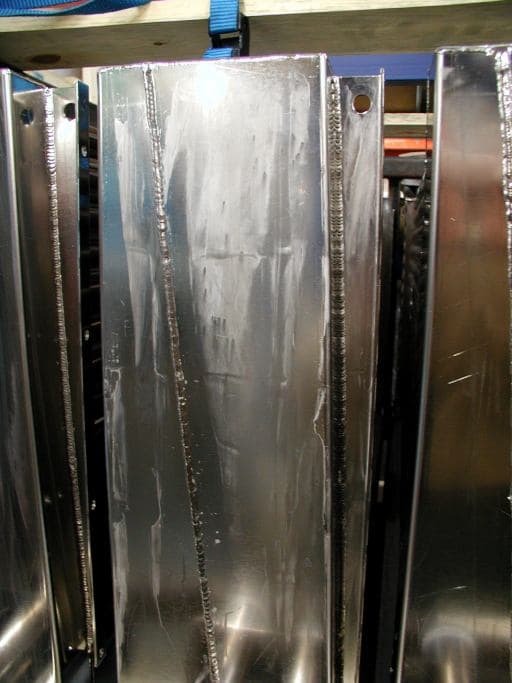
-----
Electroless Nickel over Copper Whitewash
We fabricate copper heat exchangers which are subjected to a variety of water types and conditions by the end user. In order to extend the life of the heat exchangers we have a supplier electroless nickel plate them.
We recently received a heat exchanger from the plating supplier with creamy white streaks on it, the streaks do not wipe off. The supplier called the streaks whitewash, caused by a bath brightener.
The supplier stated that whitewash is only a cosmetic issue and it does not degrade the integrity of the plating or affect it's corrosion resistance.
I do not have a lot of plating experience and would like a unbiased opinion of electroless nickel whitewash. If it's a problem why? or if not why not.
Your help would be greatly appreciated.
heat exchangers - Eden Prairie, MN, USA
2006
You seem to be quoting your suppliers words, so with such a vague (and maybe misleading) description, we cannot do much. A picture would certainly help us give the unbiased opinion you asked for.
Guillermo MarrufoMonterrey, NL, Mexico
2006
Not seeing the part or knowing the plating process and your history with that plater, I would say that if he has provided good parts in the past, he did something wrong with this batch. The brightener is a "poison" to the bath, and an excess slows down the plating rate. Are you sure that you got the desired thickness over the entire part?
If your customer can see the whitewash, he is not going to be happy. Can you strip and replate?
- Navarre, Florida
2006
Ed. note: Here is the picture, we apologize for the delay in getting it on line --

It could be the base copper was over etch in those areas (minor problem). But more likely, there was a problem with the preplate processing. Inadequate precleaning, rinsing, insufficient or improper strike. Worst consequence might be poor adhesion. Have you checked it? A tape pull-off test will give you a first indication of good adhesion. A more severe variation if the surface allows it, adds a number symbol (#) with a sharp knife before the tape pull-off. No blisters or peel-offs are acceptable.
Guillermo MarrufoMonterrey, NL, Mexico
2007
I don't get it! Your supplier should not send you parts that look like this. He should strip and replate!

Sara Michaeli
Tel-Aviv-Yafo, Israel
2007
Q, A, or Comment on THIS thread -or- Start a NEW Thread